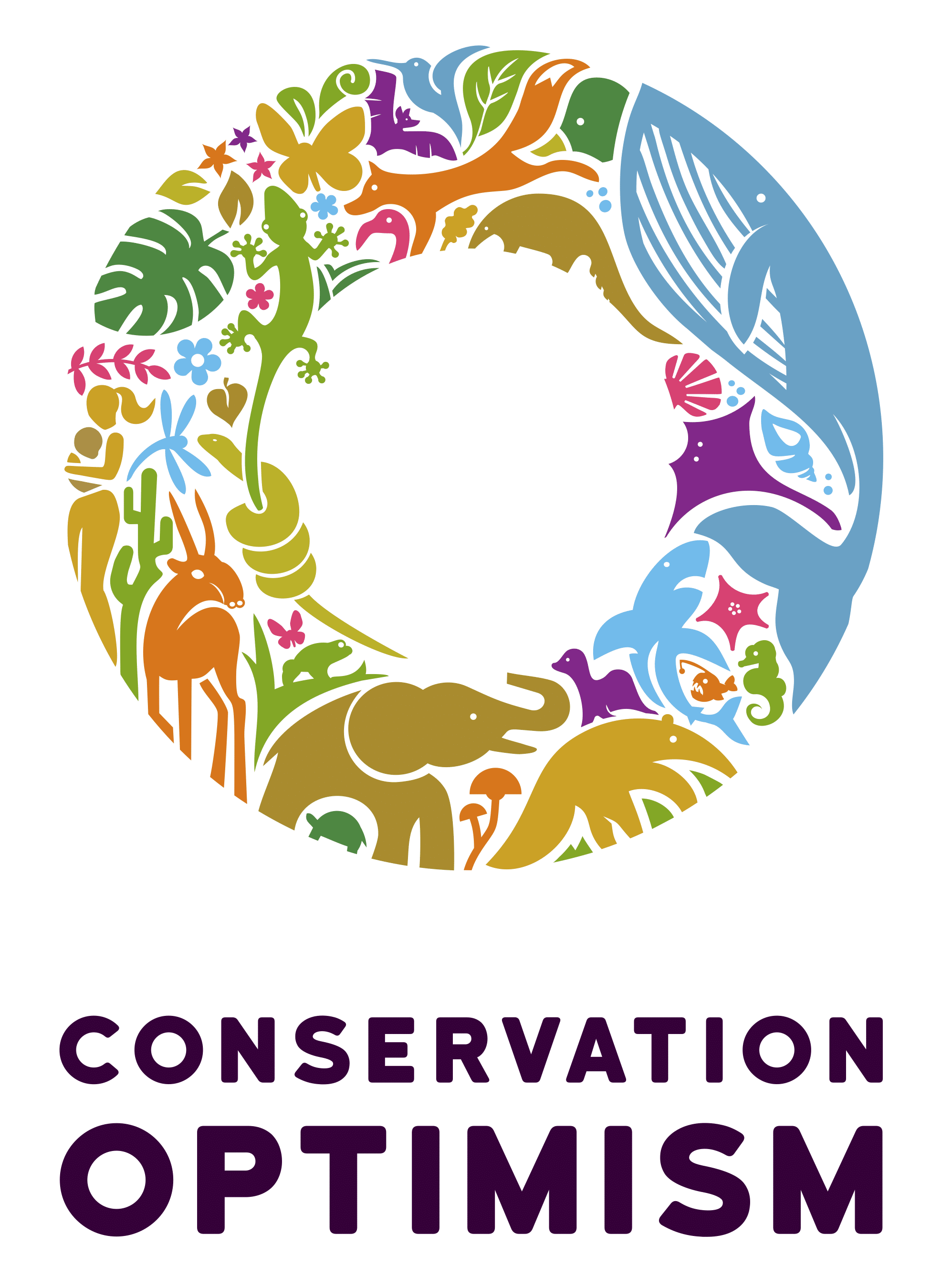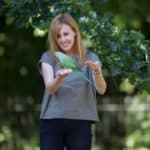A Q&A with Children’s Book Author and Conservationist Millie Kerr
On April 28, 2020, Book Guild is publishing Millie Kerr’s debut novel, The Adventures of Ellie & Boo, whose themes centre on wildlife conservation. In the middle grade book, ‘adventure cat’ Boo and her conservationist owner, Ellie, team up to help save endangered British wildlife. Kerr has worked as a conservation writer for a decade, with dozens of magazine and newspaper articles appearing in American and British publications, but this book marks her fiction debut. We sat down with her to learn what inspired it and why communicating conservation to children matters now more than ever.

Millie and a ring-necked parrot at Hyde Park
Conservation Optimism: Why write a book for young readers?
Millie Kerr: I decided to develop a book for children for several reasons. As the saying goes, children are the future, but I also believe that their minds are more malleable than those of adults: if we can engage individuals at a young age, they are more likely to care about conservation in the long-term. At the same time, I’ve been around enough children to know that the kids of today are far more knowledgeable about environmental issues than my generation was. When I attended university in the early aughts, no one talked about the environment, and I don’t believe that my university offered a single wildlife conservation course. Now, five-year-olds are talking about subjects like climate change. More recently, Greta Thunberg has shown the world that teenagers can have incredible influence.
On the other hand, I realised when writing Ellie & Boo that experiences from my childhood greatly shaped my passion for nature and wildlife. I played outside every day after school, and all of my favourite books contained animal characters and nature themes. I didn’t recognise it until decades later, but authors like A.A. Milne and Beatrix Potter planted the seeds of conservation in my mind when I was very young.
CO: You’ve written for adults for a decade but never pursued children’s literature until this project. How did you shift gears?
MK: At first, I found the shift very challenging. In fact, I developed my first children’s book concept over a decade ago—before I quit legal practice to become a journalist and wildlife conservation advocate—but I made the mistake of trying to write for children under the age of six. I quickly realized that I didn’t know how to write content for that demographic, so when I revisited the idea ten years later, I decided to write for 9-12-year-olds.
Writing for them is, in my opinion, similar to writing for adults. I remember being that age and desperately wishing adults would talk to me like a peer, so I write for children practically the same way I write for adults, though I avoid using certain words and try to make my writing as playful as possible (lots of metaphors and alliteration, for instance).
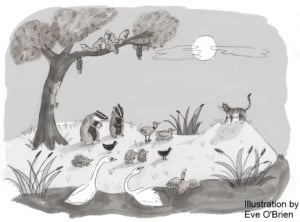
Boo addressing a crew of animals alongside
the River Cam in Cambridge
However, I selected secondary themes with children and young adults in mind. For example, I know from reading children’s and middle grade books that coming of age and finding independence are common and important concepts, so while my book’s protagonist, Boo, is a cat, she’s also meant to be seen as a child coming of age. She wants to respect her mother/owner, and abide by her rules and values, but she’s also a unique individual desperate for independence. Like many children, she wants to carve out her own philosophies and space.
This tension—between respecting elders and being true to oneself—comes up throughout the book, and the way it’s resolved reflects my personal attitudes towards parenting. I’m not a parent myself, but I spend a lot of time around families and am very in touch with my inner child, so I have strong opinions about how parents and children can communicate with one another.
CO: How did you go about writing the book?
MK: I’m a big believer in thinking versus outlining, so I spent months, if not years, mulling over this book before putting pen to paper. I knew that I wanted to focus on conservation and wildlife, and explore the aforementioned themes, but I didn’t have a clear sense of characters or plot.
Years ago, after bringing my rescue cat, Baboon (“Boo”), from Texas to London, I found myself imagining her going on adventures in my neighborhood and London’s parks even though my Boo, unlike the book’s eponymous protagonist, hates going outside (it has always scared her). I pictured her befriending local squirrels and meeting royal pets near Kensington Palace. This idea inspired the book I attempted to write years ago, but when I developed my current book idea three years ago, I decided to bring in some of those ideas while shifting the narrative to focus on persecuted and endangered wildlife in the UK.
I decided to base the book in Cambridge—where I obtained an MPhil in Conservation Leadership during 2015-2016—and developed a secondary character, Ellie, who’s very loosely based on me. I knew from studying storytelling that the narrative needed a major challenge to fuel it, so I decided to choose a conservation cause and dig into it. Having read about the persecution of badgers in the UK, I chose to focus on their plight. In the book, Ellie & Boo and a motley crew of wild animals collaborate to persuade the British Government to halt badger culls. Interestingly, Defra recently announced its intention to minimise and ultimately halt such culls, making my book that much more topical.
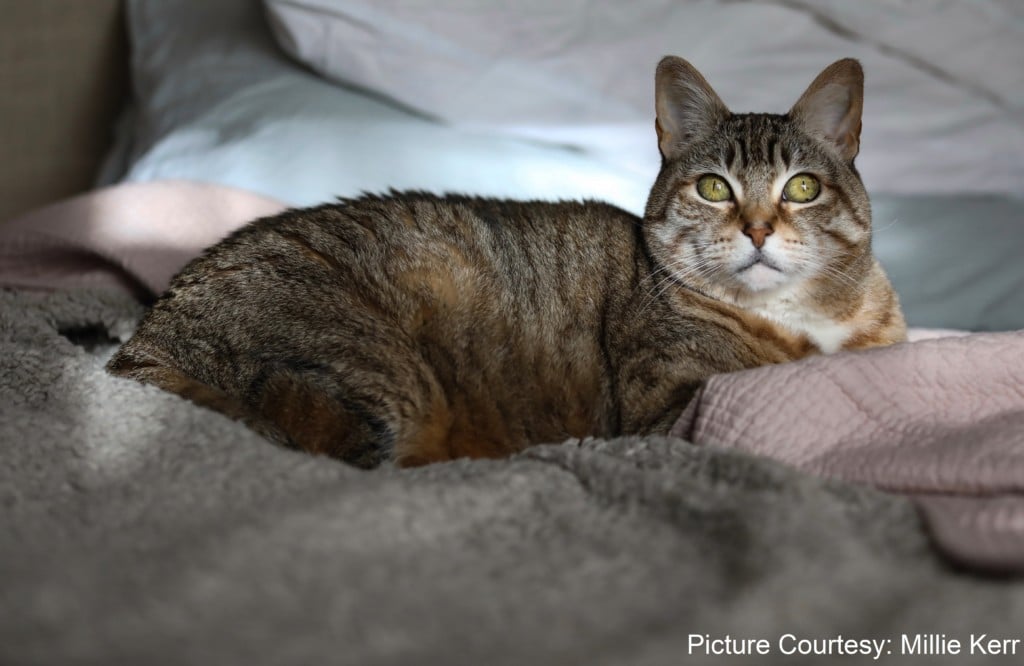
Boo–a tabby Millie rescued in Texas 15.5 years ago (she lives with Millie in London, and the book is VERY loosely based on the two)
Finally, I knew that I wanted the book to end on a positive note. As you well know, conservation optimism is incredibly important these days, and children in particular need to feel empowered and optimistic about the conservation movement. Of course, there’s a time and a place for difficult news, but I personally prefer to write about wildlife conservation in a way that sparks awe and optimism.
Once I had these elements in mind, I began writing. I never outline, but I made a rough sketch of the narrative with a timeline in place and did my best to stick to it, though I ended up changing and rewriting quite a few chapters. There were times when I wrote all day and others when I wouldn’t work on the book for months. In total, it took me around two years to complete the book, but if it had been my only project, I probably could have completed it in two months, though I still believe that months (or more) of brainstorming should precede outlining or writing.
CO: How did you find a publisher for The Adventures of Ellie & Boo?
MK: I considered self-publishing but decided that my preference was to collaborate with an agent and/or publisher since I know very little about book publishing. In the end, I was able to secure a publishing deal without the help of an agent, which came as a pleasant surprise.
Even though I’ve published numerous articles and contributed chapters/essays in two previously published works of nonfiction, I never assumed that I’d be able to publish this book. In fact, I put my chances at 20% or lower.
However, I reached out to dozens of agents and publishers and was incredibly focused on, and tenacious about, outreach, which undoubtedly boosted my chances. I have the advantage of knowing how to pitch since I’ve been pitching magazine editors for ten years!
In terms of my process, I identified agents and publishers using several approaches: (1) I looked at books similar to mine that have already been published to see which companies published them (and which agents are thanked in acknowledgements sections); (2) I conducted online research and was delighted to find several helpful blogs from children’s book authors who laid out the process; and (3) I asked friends, relatives, and social media networks if they had advice or contacts to share. Only the first two paid off in terms of finding a publisher, but multiple friends gave samples of my manuscript to their children to read, which led to constructive feedback that I directly incorporated when reworking drafts.
When kids responded to say that they loved the book, I knew I was onto something!
CO: Your book comes out on April 28. What’s next?
MK: The Adventures of Ellie & Boo is conceived as a series, and it concludes with a teaser of what’s to come. I’m now working on the second book, but the process is slow-moving since I’m currently completing several magazine assignments and recently spent five months working at wild cat NGO Panthera as its global director of public relations while the permanent head of PR was on maternity leave.
I would love to finish the first half of the second book, which is set in Kenya and involves lions, by mid-summer, and I’m also in the midst of developing a nonfiction book on the subject of re-wilding and conservation legacy. Finally, I’m incredibly passionate about visual storytelling, so I spend much of my time taking wildlife photographs and investing in my wildlife photography skills.
In general, I’m committed to spending my career (and life!) telling stories about nature and wildlife and how humans are helping protect both, but I don’t like being too precise about how I plan to achieve my goals. It’s important, I think, to develop something akin to a mission statement while avoiding the temptation to chart out one’s life with too much detail since chance and serendipity are always at play. Having said that, I often come back to a quote by my favourite philosopher, Epictetus. He said, “First say to yourself what you would be; and then do what you have to do.”
Millie’s book, The Adventures of Ellie & Boo, comes out on April 28th in the UK but can be pre-ordered now via Amazon and Waterstones, both of which can ship copies internationally. Learn more about Millie via her website, MillieKerr.com, and follow her wildlife photography journey on (Instagram @milliekerrphotography).
In addition to writing fiction, Millie works as a freelance journalist, wildlife photographer, and conservation communications consultant.
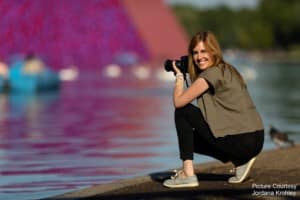
If you find Millie’s work as fascinating as we do, tune in to her Instagram on the 7th of April at 3PM GMT. You’ll be able to speak directly to her on a live Q&A session, and ask her about her work, her motivation or anything else you are curious about!
Stay safe!
